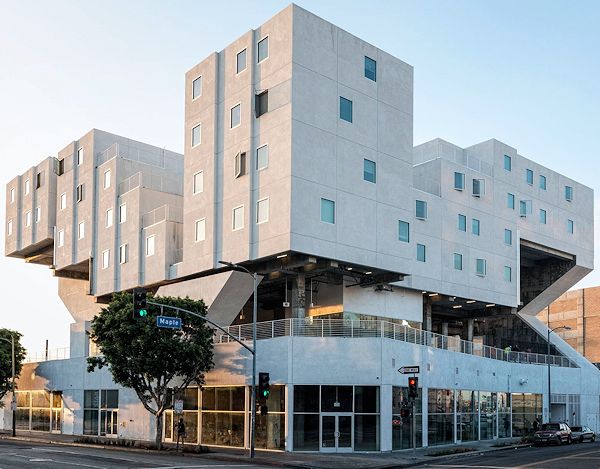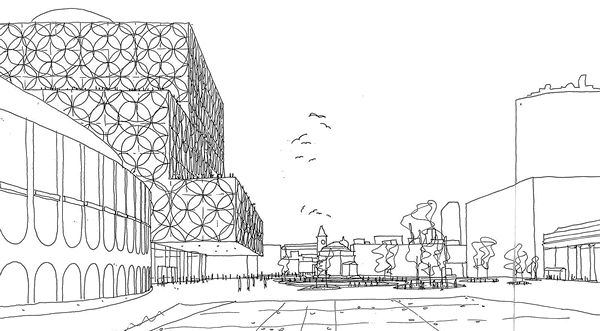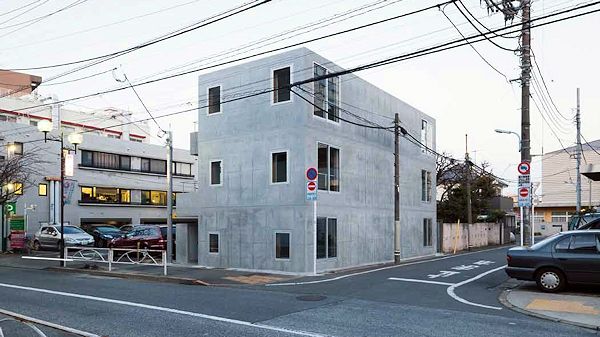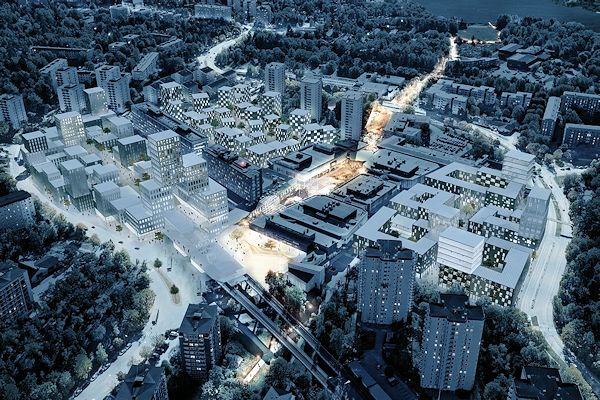2015.02.26 09:21
Amsterdam's "ugly" architecture from the 70s proves resilient against gentrification
"I'm not trying to tell people what they should like or even less pretend to speak for 'the masses", but I'm always trying to learn about human psychology to better design for it..."
Thayer-D, if, what you say is true, then wouldn't your time here be better spent by demonstrating how to "better design for it"? Otherwise, your ongoing critique falls short of manifesting any meaningful effect. If, for example, you want architectural education to change in accordance with your critique, then you should continually demonstrate how your "better design for it" is indeed better.
Essentially, your time here would be better spent going beyond "all talk and no action."
Personally, however, I have a feeling most of your "lessons" have already been learned.



If I'm wrong, then please show us all how you have learned to do better.
| |
2015.02.26 10:16
Amsterdam's "ugly" architecture from the 70s proves resilient against gentrification
T-D, aren't you the one being childish right now?
2015.02.26 12:57
Amsterdam's "ugly" architecture from the 70s proves resilient against gentrification
Speaking of humans, ever notice how all the 'important" functions happen inside mostly without simultaneous indications on the outside.
2015.02.26 12:57
Amsterdam's "ugly" architecture from the 70s proves resilient against gentrification
To: design-l
Subject: rammed into an envelope
Date: Tue, 4 Apr 2000 20:39:41 -0400
John Young wrote:
What is peculiar to me is the conviction that the visual in architecture should not evolve from the full implementation of its attributes, not as an envelope into which these attributes should be rammed.
Gregory Wharton wrote:
Well said. This puzzles the hell out of me, too.
Van Varga wrote:
Probably puzzles most of us. Architecture to non architects (most people) is just another expression of fashion. (snip)
Steve Lauf suggests:
Is not the 'architecture' of the human body an envelope rammed full of 'attributes' that DO NOT show their 'implementation' on the outside? For example, breasts with nipples hardly reflect either the lungs or the pumping heart inside, likewise the one-piece torso offers little 'superficial' indication of two cavities inside. And further, isn't the sublime singularity of the navel very much like the exact opposite of the twisting, turning, asymmetrical intestines just inside? [And just think how literally close the activities within barber shops and beauty parlors come to the activities inside the brain, yet who would dare say that these two activities share the same "function"?]
Perhaps the 'popularity' of liking the 'mechanical' out of sight is really only a reflection of simply being human.
Personally, it's no puzzle to me.
2015.02.26 16:24
Amsterdam's "ugly" architecture from the 70s proves resilient against gentrification
Here's a very recent take on redesigning something from the 1960's, all accomplished in a contemporary architectural idiom:

COBE, together with SLA, Tyrens, ICP and Yngve Andren selected for the further development of Farsta Centre.
Farsta Centrum is the largest shopping mall in Stockholm with over 150 stores and over 40,000 m2. It was developed in the 1960's as the centre of Farsta - a Stockholm suburb developed from modernist ideals of life in the green and separation of functions. Today Farsta Centre is the first of 9 strategic growth centers in Stockholm - one of Europe’s fastest growing city regions. Can we transform Farsta Centrum from a 1960's mall into a vibrant, active, diverse and dense city centre for the inhabitant of Stockholm?
There are a number of nicely convincing "before and after" views.
2015.02.27 11:46
Amsterdam's "ugly" architecture from the 70s proves resilient against gentrification
In the last 26 hours...
Given that jla-x wrote:
Thayer, yes a cornice does express a function, but as technology advances function becomes less visable. Think about the evolution from the steam engine with its visible mechanisms to the jet engine...the i-phone is completely void of any functional expression. it would look like majic to a 18th century person. Think about sci-fi films. The monolith from "2001 space odessy". Nano tech will appear monolithic solid. no parts. function happens behind the scenes. Just seems like concealing this expression of function is a broader trend...
and then curtkram wrote:
rasberry pi is the sort of functional beauty we should be striving for. it's has a lot parts/a lot of detail similar to the sculptural work of a gothic cathedral. it communicates it's function. it can be profoundly simple at the same time as it's remarkably complex. nothings hidden.
and then EKE wrote:
It's interesting that you would use this example as a paradigm for how contemporary buildings should communicate with us. It projects a general, vague impression of something "modern" "high-tech" and digital, without actually communicating anything else. It says nothing about human beings, and makes no effort to convey a moral point-of-view. It just says "I'm complex, I'm technological". That's exactly how so much of the avant-garde architecture functions today.
is it then really delusional for me to have posted this:
To: design-l
Subject: rammed into an envelope
Date: Tue, 4 Apr 2000 20:39:41 -0400
John Young wrote:
What is peculiar to me is the conviction that the visual in architecture should not evolve from the full implementation of its attributes, not as an envelope into which these attributes should be rammed.
Gregory Wharton wrote:
Well said. This puzzles the hell out of me, too.
Van Varga wrote:
Probably puzzles most of us. Architecture to non architects (most people) is just another expression of fashion. (snip)
Steve Lauf suggests:
Is not the 'architecture' of the human body an envelope rammed full of 'attributes' that DO NOT show their 'implementation' on the outside? For example, breasts with nipples hardly reflect either the lungs or the pumping heart inside, likewise the one-piece torso offers little 'superficial' indication of two cavities inside. And further, isn't the sublime singularity of the navel very much like the exact opposite of the twisting, turning, asymmetrical intestines just inside? [And just think how literally close the activities within barber shops and beauty parlors come to the activities inside the brain, yet who would dare say that these two activities share the same "function"?]
Perhaps the 'popularity' of liking the 'mechanical' out of sight is really only a reflection of simply being human.
Personally, it's no puzzle to me.
If what I posted is indeed delusional, can someone explain the delusion?
| |
2015.02.27 13:48
Amsterdam's "ugly" architecture from the 70s proves resilient against gentrification
Because the sentiments from 15 years ago are germane to the above reposted comments from yesterday. Moreover, the content of the post from 2000 directly addresses the issues brought up yesterday.
davvid, I'm a bit confused by your question. Are you perhaps suggesting that the content of the repost is not valid because it's from 15 years ago?
2015.02.27 14:35
Amsterdam's "ugly" architecture from the 70s proves resilient against gentrification
Yesterday, after reading jla-x, curtkram and EKE's comments, I was reminded of the post from 15 years ago. I was fairly certain that the exact post was somewhere online at quondam.com, so I did a google search "rammed envelope" site:quondam.com to find where it was, and, having found it I copy-pasted the whole email.
I used the whole email so it had a context greater then just being germane to the few posts in this thread, particularly to jla-x's "Just seems like concealing this expression of function is a broader trend..." EKE's "It says nothing about human beings" is what really jogged my memory. curtkram bringing up rasberry pi is like an uncanny gauge of how far 'design of function' has come along in the last fifteen years. And, for me personally, seeing the repost together with the posts from yesterday has got me rethinking and newly thinking about design with regard to hidden/concealed meaning/function inside/outside, etc. with rasberry pi being an interesting new touchstone.
2015.03.01 15:36
MAX
Less is a bore?
2015.03.02 17:22
Vienna plan world's tallest wooden skyscraper
Wonder if anyone who saw the first concrete frame said it looked like a wood frame.
|